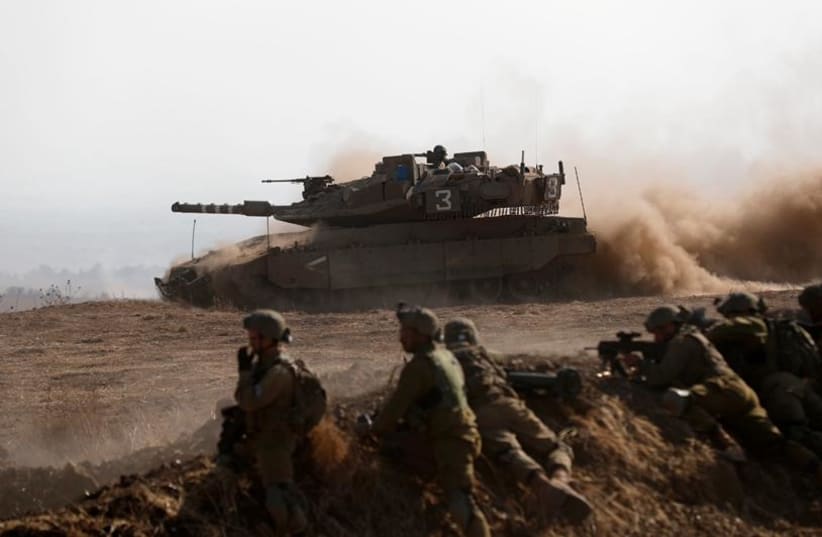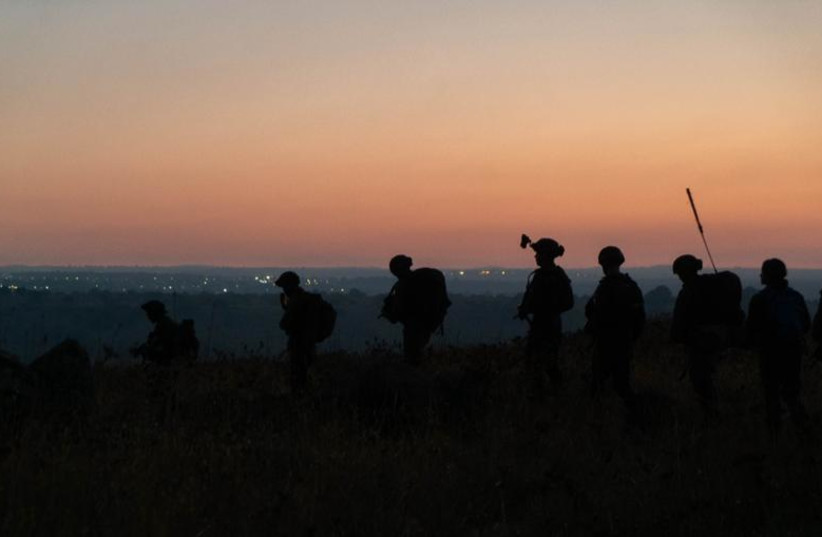As tensions continue to rise with Iran, the Israeli military kicked off a month-long series of exercises simulating war on its northern border with Lebanon, to improve the preparedness of forces against Hezbollah.
Known as “Even Gazit” or “Hewn Stone” the exercises will see all levels of the Northern Command participate in the drills whose goal is to “improve the defensive and offensive capabilities of the IDF against a variety of scenarios,” the IDF Spokesperson’s Unit said in a statement.
During the month, there will be drills and divisional exercises that will simulate “multi-front, intensive and drawn-out combat, with conscripted and reservist troops taking part, from all headquarters of the Northern Command, in collaboration with the General Staff directorates, the Ground Forces, Air Force, and Navy,” the statement continued.
Cyber and spectrum along with intelligence bodies will also take part in the drills that will also focus on the integration of all forces as part of the IDF’s “Victory” concept.
It comes alongside a surprise General Staff drill that examines the readiness of reserve forces in the Northern Command to respond to an explosive incident along the border with Lebanon.
During the exercise, calls will be made and text messages sent to reservists, some of whom will be asked to report to their units.
The IDF said that both drills were planned in advance as part of the 2021 training schedule.
The drills are also occurring alongside a major nationwide home front exercise that kicked off yesterday also simulating war against the Shi’ite terror army.
Last week the 401st Armored Division’s 9th Battalion held a two-week-long drill alongside infantry forces from the Nahal and Givati Brigades in the Jordan Valley.
Like the other two drills, it simulated drawn-out combat against Hezbollah in Lebanon and is working on joint maneuvering of forces.
The intensive drill also saw the use of intelligence collection by ground reconnaissance forces and drones in the air as well as support by the Air Force and Artillery batteries.
“We aren’t fighting alone, the power of the IDF means bringing intense firepower wherever needed,” said the Commander of the 9th Battalion, Lt.-Col. Eliezer A. “We want the firepower to get to where we need it to be before we get there.”
The Merkava Mark IV equipped with the Trophy active protection system used by the battalion, “are always in the front,” he said.
The IDF hasn’t conducted a proper ground maneuver in enemy territory since troops entered Gaza in 2009 during Operation Cast Lead. During Operation Pillar of Defense in 2012 and Operation Protective Edge in 2014, the IDF and political leadership chose to rely mainly on the air force, keeping the ground troops and armored corps out of the Strip or in the border area to neutralize Hamas tunnels.
But the military knows that a war in the north will not be able to rely solely on the air force and has therefore been carrying out intensive drills in the northern part of the country simulating war with Hezbollah.
The 9th Battalion took part in the Second Lebanon War, but, Lt.-Col. A said, “a lot has changed since the last time we fought in Lebanon.”
“The 9th battalion fought in the battle of Wadi Saluki and had a lot of casualties,” he said. “The Nahal brigade also fought in Wadi Saluki and the joint cooperation between forces wasn’t as good as it is now...”
The battle of Wadi Saluki was one of the fiercest battles of the Second Lebanon War during the Litani offensive, a few hours before the UN-brokered cease-fire went into effect. Tanks from the 9th Battalion crossed the wadi and Nahal infantrymen had been deployed on the high ground outside Andouriya and Farun to provide cover for the tanks below who were facing fierce Hezbollah resistance.
Twelve IDF troops were killed, eight tankists and four infantrymen and some 80 Hezbollah militants were killed before the ceasefire went into effect in the early morning of August 14th.
Fifteen years later, both sides are learning and improving their battle plans for future confrontations.
“I think that since that battle, one of the main things we’ve learned is how to fight together,” Lt.-Col. A said. “The enemy is learning, but so are we.”

